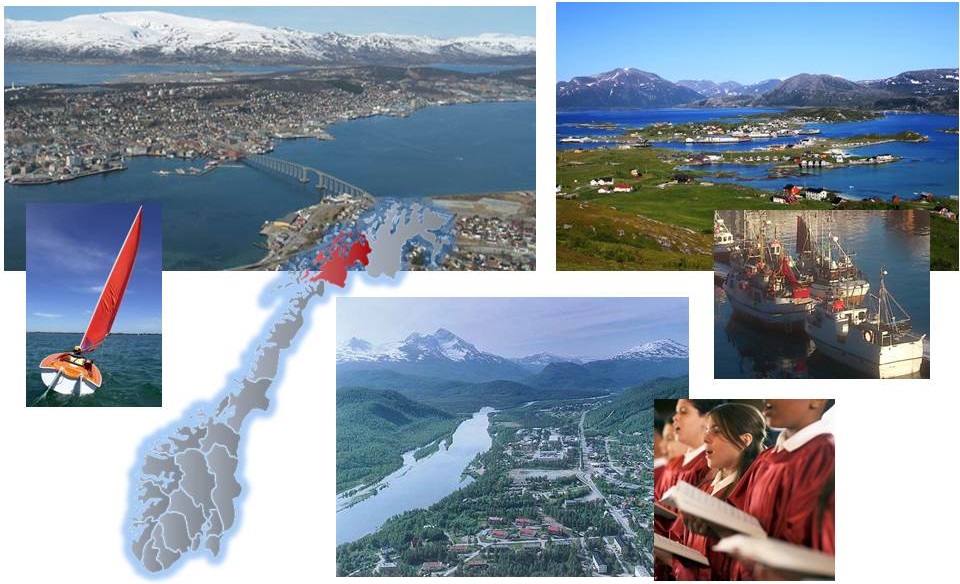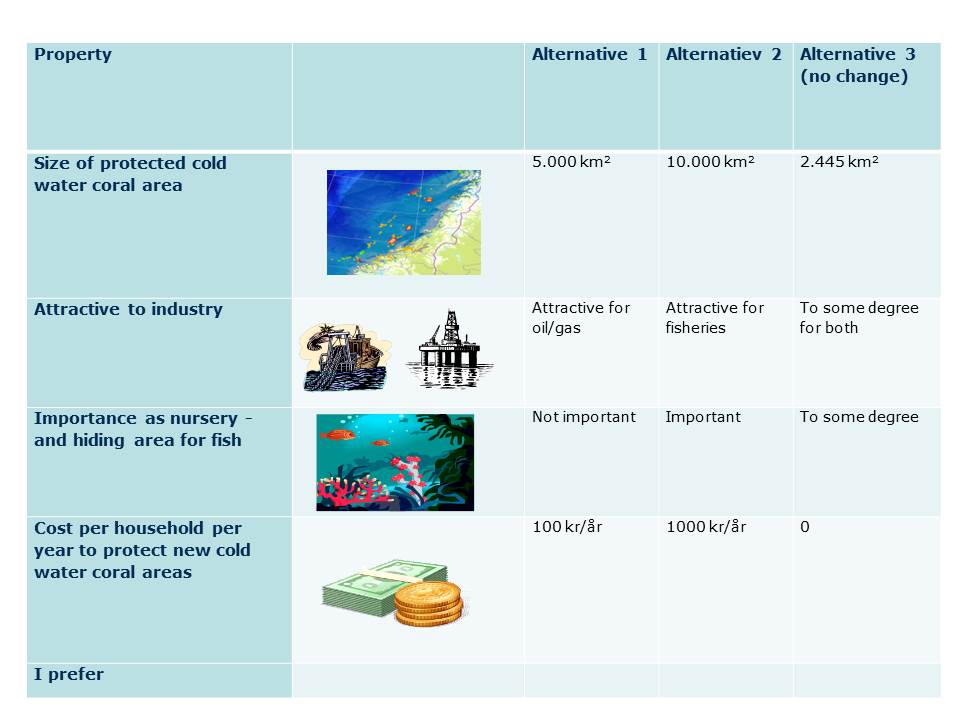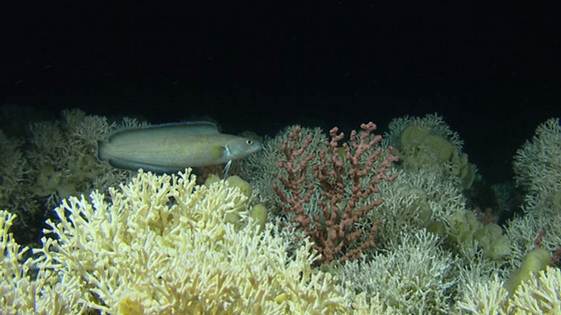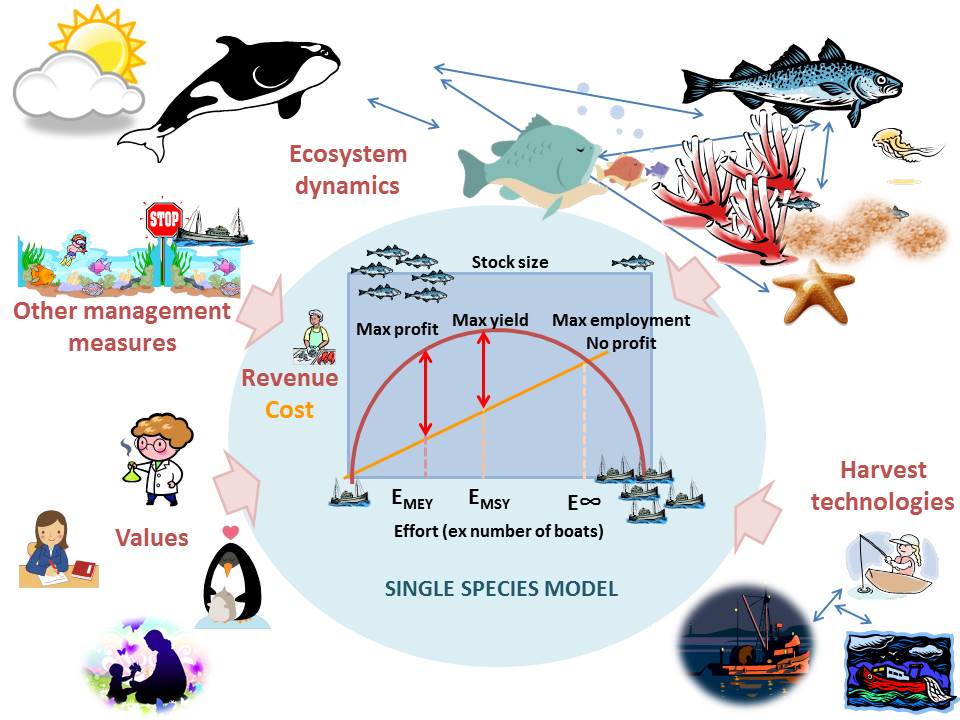Publications and outreach
Papers
- Armstrong, C.W., Kahui, V., Vondolia, G.K., Aanesen, M. and Czajkowski, M. Use and non-use values in an applied bioeconomic model of fisheries and habitat connections. Forthcoming Marine Resource Economics
Abstract
In addition to indirect support to fisheries, marine habitats also provide non-use benefits often overlooked in most bioeconomic models. We expand a dynamic bioeconomic fisheries model where presence of natural habitats reduces fishing cost via aggregation effects, and also supplies non-use benefits. The theoretical model is illustrated with an application to cold water corals in Norway where two fishing methods are considered – destructive bottom trawl and non-destructive coastal gear. Non-use values of cold water corals in Norway are estimated using a discrete choice experiment. Both the theoretical model and its empirical applications show how non-use values impact upon the optimal fishing practices.
![]()
- Armstrong, C.W., Foley, N. and Kahui, V. A production function analysis of fisheries and habitat – open access versus optimal management. Land Economics 2016.
Abstract
We apply a bioeconomic production function approach to fisheries and habitats, in order to assess consequences of exogenous habitat loss, both for open access and optimal management. We find that habitat levels matter under optimal management as they directly impact upon profits, and habitat degradation impacts upon profits disproportionally more at low levels of habitat. Using time series data from Icelandic redfish fisheries and estimates of cold water coral decline, we estimate parameters for the model, and indicate potential losses for open access and optimal management. The results support the theoretical predictions, underlining the importance of taking into account habitat -fisheries interactions.
![]()
- Sandorf, E.S., M. Aanesen and S. Navrud, 2016. Valuing unfamiliar and complex environmental goods: A comparison of valuation workshops and internet panel surveys with videos. Ecological Economics, 129, 50-61.
Abstract
We compare two discrete choice experiments eliciting willingness-to-pay (WTP) for increased cold-water coral protection in Norway using valuation workshops and an internet panel survey with videos. The video presentation provides the same visual presentation of information about the good and valuation task as in the valuation workshop. In doing so, we are the first to compare these survey modes. The two survey modes perform equally well with respect to sampling, but the internet survey gives significantly lower WTP estimates. We identify a large number of status quo (SQ) choosers in the internet survey that partly explain this result. Furthermore, respondents who speed through the survey questionnaire, and believe the survey to be inconsequential are more likely to be SQ choosers. While an internet survey is a fast and cost-effective way of obtaining a representative population sample, the potential biases in the valuation of complex and unknown environmental goods outlined here should be carefully addressed in future internet panel surveys.
![]()
- Falk-Andersson, J., Foley, N.S., Armstrong, C.W., van den Hove, S., van Rensburg, T.M. and Tinch. R. 2015. A deliberative approach to valuation and precautionary management of cold water corals in Norway. Maritime Studies, 14:7.
|
Abstract This paper explores management challenges in relation to human impacts on cold water corals (CWC) in Norway. CWC are a slow growing organism about which there is uncertainty regarding distribution and values. We discuss area closures to protect this environmental public good against destructive fishing practices. Focus groups were combined with questionnaires to inform precautionary management measures that can be used to protect known CWC as well as areas where CWC are thought to exist. |
|
||
|
The research finds that respondents believe CWC are valuable and should be protected, but that this requires information on their presence and importance. Furthermore, priorities for protecting CWC differed between group discussions and the questionnaire responses. Use-values, particularly habitat supporting fish production, dominated the focus group discussions, while non-use and intrinsic values were emphasised in the questionnaire responses. Respondents rejected the use of the precautionary measure of temporary closures to gain information on CWC presence. Reasons were costs to fishers, and the rejection of the premise that precautionary closures would prevent further damage. This study shows that both use- and non-use values are effective arguments motivating people to support policies for nature protection. However, they are not sufficient to motivate support for precautionary measures that would provide significant but uncertain benefits for known costs. To motivate support for precautionary policies, there is a need to communicate better the types of organisms, services and values that may be lost without protection. |
|||
![]()
- V. Kahui, C.W. Armstrong and G.K. Vondolia. Bioeconomic Analysis of Habitat-fishery Connections - Fishing on Cold Water Coral Reefs. Land Economics 2016.
|
Abstract A bioeconomic model is developed to study habitat-fishery connections such as cold water coral habitats, which are negatively affected by bottom trawling but remain unaffected by stationary gear harvest. Using dynamic optimization for a two-fleet model (destructive and non-destructive fishing gear) targeting the same commercial fish stock, we derive steady-state levels of the optimal fish stock conditional on the cold water coral stock and of the optimal cold water coral stock conditional on the fish stock such that optimum optimorum values can be identified. We find that when coral is a preferred habitat, the fish and coral stocks become substitutes in terms of unit cost savings of harvest, while an essential habitat implies competing cost and growth effects. We apply data from a case study of the North East Atlantic cod fishery. The results are robust and confirm our theoretical prediction that cod and cold water coral stocks are substitutes when assuming the habitat-fishery connection is preferred. |
- Aanesen, M., Armstrong, C.W., Czahjkowski, M., Falk-Andersson, J., Hanley, N. and Navrud, S. 2015. Willingness to pay for unfamiliar public goods: Preserving cold-water coral in Norway. Ecological Economics.
|
Abstract The world’s largest concentration of cold-water coral (CWC) is found off the Norwegian coast. Most CWC discoveries are recent, posing new challenges for Norwegian coastal and fisheries authorities regarding the management of deep-sea resources. Scientific knowledge of CWC is limited, and many citizens have not even heard about them. This creates problems for the application of stated preference methods to capture their economic value, and very few such studies have been conducted. To fill this gap, we designed a discrete choice experiment, which was implemented in a valuation workshop setting in order to derive estimates of participants’ willingness to pay (WTP) for increasing the protection of CWC. . |
||
|
Despite the fact that marine industries such as oil/gas and fisheries could be adversely affected by CWC protection, this did not reduce the respondents’ willingness to pay for further protection. The possibility that CWC play an important role as habitat for fish was the single most important variable to explain respondents WTP for CWC protection. The survey revealed a high degree of preference heterogeneity, whilst we found an average WTP for CWC protection in the range of EUR 274-287 |
|||
![]()
- Armstrong, C.W., Foley, N.S., Kahui, V. and Grehan, A. 2014. Cold water Coral reef management from an ecosystem service perspective. Marine Policy. 50A, pg 126-134.
|
Abstract Many countries have put in place protection of cold water coral (CWC) reef areas in relation to fishing, especially bottom trawling. As little has been known about the ecosystem function of CWC, protection has largely been driven by existence values such as uniqueness/rareness, charisma and low resistance from fishermen due to limited effects upon fisheries. This paper identifies the services from CWC, underlining the supporting services that may determine the flow of the more direct provisioning, regulating and cultural services. |
|
Current research points to the value of CWC as a habitat for commercially interesting species, which motivates management of these resources to include a more comprehensive set of mechanisms, such as placing incentives to encourage a change of gear from bottom trawling to less destructive methods in less densely covered CWC areas, and possibly a stronger focus on other benthic habitats that are equally or more valuable, such as sponges.
![]()
-
LaRiviere, J., Czajkowski, M., Hanley, N., Annesen, M., Falk-Petersen, J. and Tinch, D. (2014). The value of familiarity: effects of knowledge and objective signals on willingness to pay for a public good. Journal of Environmental Economics and Management.
 |
Abstract We design and conduct a field experiment in which treated subjects receive a precise and objective signal regarding their knowledge about a public good before estimating their WTP for it. We find that the causal effect of objective signals about the accuracy of a subject’s knowledge for a public good can dramatically affect their valuation for it: treatment caused a significant increase of $85-$129 in WTP for well-informed individuals. We find no such effect for less informed subjects. Our results imply that WTP estimates for public goods are not only a function of true information states of the respondents, but beliefs about those information states. |
Conferences
Kofi Vondolia presented “Use and non-use values in an applied bioeconomic model of fisheries and habitat connections” at 22nd annual conference of European Association of Environmental and Resource Economists, 22 – 25 June, 2016 in Zurich, Switzerland.
![]()
Claire Armstrong was invited to the Australian Agricultural and Resource Economics Society (AARES) conference in Canberra, Australia 2-4 February 2016, to give the talk: "Moving from fisheries management to ocean management".
![]()
Claire Armstrong was invited to the High Seas Symposium, Global Ocean Commission, Somerville College, Oxford, UK, 12-13 November 2015, to give the talk: "Deep sea ecosystem services ".
![]()
Claire Armstrong was invited to the Zoological Society of London, London Zoo, UK, October 13 2015, to give the talk: "Valuing cold water corals ".
![]()
Claire Armstong was invited to the Norwegian Academy of Technological Sciences seminar in Tromsø, September 3rd 2015, to give the talk "Verdien av økosystemtjenester i havet" (The value of Ecosystem services in the ocean).
![]()
Margrethe Aanesen presented the paper "Willingness to pay for unfamiliar pubic goods: preserving Cold-water Coral in Norway" at the 21st annual Conference of EAERE, 24-27th of June 2015 in Helsinki, at the 37th National (Norwegian) Research Conference for Economists, Bergen 5-6th of January 2015 and at the 2nd International Ocean Research Conference (IORC), in Barcelona 17-21st of November 2014.
![]()
Margrethe Aanesen presented the paper "Interviewer effects in a discrete Choice Experiment implemented as a valuation workshop" at the 17th annual BioEcon Conference, Kings College, Cambridge, 13-15th of September 2015.![]()
Erlend Danke Sandorf presented "Survey Mode Effects: Comparing a Valuation Workshop and an Internet Panel" at the 37th National (Norwegian) Research Conference for Economists, Bergen 5-6th of January 2015.![]()
Erlend Danke Sandorf presented the papter "Disentangling the Influence of Knowledge on Processing Strategies in Choice Modeling" at the 4th International Choice Modelling Conference, University of Texas, Austin, 10-13th of May 2015.
![]()
Erlend Danke Sandorf presented the paper "Disentangling the Influence of Knowledge on Processing Strategies in Choice Modeling" and the poster "Novel Survey Models for Valuing Unfamiliar and Complex Environmental Goods: Valuation Workshops versus Internet Panel Surveys with Videos" at the 21st annual Conference of EAERE, 24-27th of June 2015 in Helsinki.
![]()
Claire Armstrong presented the paper "Non-use value in natural resource management – a bioeconomic model of fisheries and habitat" by C.W. Armstrong, V. Kahui, G.K. Vondolia, M. Aanesen and M. Czajkowski, at the NAAFE Conference in Alaska (May 2015).
|
Abstract
The paper develops a dynamic bioeconomic model of fishing on a valuable habitat. The value connected to the habitat is assumed to be due to fishing cost reductions resulting from congregating effects, and due to non-use values of the habitat. Two types of fishing technology are applied; habitat destructive and non-destructive, and the habitat is assumed to be non-renewable. The model is applied to the Norwegian North East Arctic cod fishery, using bottom trawl and coastal non-destructive gear. Cold water coral is the habitat studied. |
||
|
|||
![]()
Claire Armstrong presented modelling results from data on the importance of cold water coral for redfish at the 2013 BIOECON Conference in Cambridge. "Habitat-fisheries interactions and management: the case of redfish fisheries and cold water coral in Iceland". The Research was conducted in Cooperation With Foley, N. and Kahui, V.
![]()
Claire Armstrong gave the talk "Ecosystem-based management of fisheries - the economic case for including cold water coral" at the conference for reserachers that had contributed to the Norwegian Research Council's research program "Havet og Kysten" (The Oceans and the Coastal Areas). The conference took place at the Coastal Steamer "Midnatsol" from 7-9 of April, 2015.
|
Abstract Developing a bioeconomic model of fisheries and habitat applying open access and optimal management, this paper shows that the societal importance of fish habitat depends in part on the management of the fishery. Using time series data for Icelandic redfish fisheries and estimates of possible outer limits of cold water coral decline, a habitat often linked to redfish, the model is empirically tested. The results show indications of economic losses in the fishery due to cold water coral decline. As the habitat loss increases, we observe that the Icelandic fishery moves from being low cost to high cost. The results of this study illustrate how habitat loss may affect fisheries, and underline the importance of taking into account the broader fisheries externalities of habitat destruction when optimally managing the fishery itself. |
|
![]()
Claire Armstrong was invited to the 2014 World Conference On Natural Resource Modeling as a key note speaker. Her talk "Moving from fisheries management to ocean management in bioeconomic models" included knowledge from the projects she has been involved in on deep sea ecosystems and cold water corals.
|
Abstract Bioeconomic fisheries models have traditionally focused on simple single species biomass models with logistic growth, combined with open access or optimal economic management. Over the years these models have been expanded upon to include developments in biological research such as fish cohorts and multispecies interactions. |
| Expansions also include greater sophistication on the human side including interacting harvesters and technologies as well as different management forms. The expansion to ecosystem based management perspectives has focused on how fisheries function within a broader ecosystem perspective. Initiatives in relation to seeing the ecosystem as a provider of a broad specter of services opens up for an even more encompassing modeling of the ocean, where fisheries are just one of many services, and where services may include benefits that are very different to fish found in markets. |
|
| Fisheries provide provisioning services, but regulating and cultural services from the ocean may in some instances prove to have greater value to humans, and may indeed conflict with the fisheries benefits. Including these aspects involves different use values, but also non-use values which are not found in markets. This challenges both modeling and the collection of data, and brings together disciplinary traditions and methods which so far have been relatively segregated within natural resource economics. |
![]()
Jannike Falk-Petersen presented the paper "A deliberative approach to valuation and precautionary management of cold water corals" at the IIFET Conference in July 2014 in Brisbane. The paper reports on findings from focus grup studies conducted at the beginning of the Coral Value Project with sailors in Tromsø, fishers at Sommerøya and a choire in Målselv.
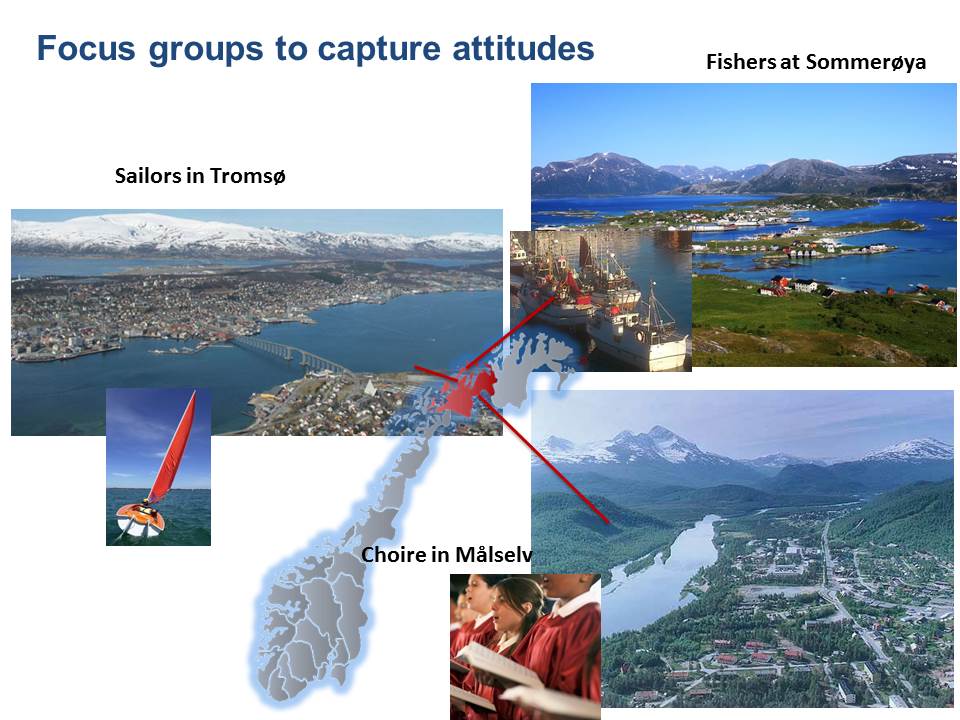 |
Abstract This paper explores challenges for management of human impacts on cold water corals (CWC). The implications of their complex environmental public good nature, involving irreversibility and uncertainty, are discussed. Focus groups are combined with questionnaires to inform precautionary management measures that can be used to protect CWC. The research finds that respondents believe CWC is valuable and should be protected. However, priorities for protecting CWC differed between group discussions and the questionnaire responses. Use-values, particularly habitat for fish, dominated the focus group discussions, while non-use and intrinsic values were emphasised in the questionnaires. The dilemma of implementing precautionary measures was highlighted as respondents rejected the use of temporary closures to gain information on CWC presence. Reasons were costs to fishers, and the rejection of the premise that precautionary closures would prevent further damage. |
![]()
Elend D Sandorf also presented at the IIFET Conference . His talk was called "Exploring discontinuous preferences in discrete choice experiments: the case of cold water corals in Norway".
|
Abstract The willingness-to-pay estimates obtained from discrete choice experiments (DCE) can give important policy signals because they provide policy makers with information on how much the population values an ecosystem good or service. Such valuations may help secure the environmental good’s place in management plans, and give it weight in trade-offs between resources and other perhaps destructive activities. However, much of the usefulness of these estimates rests on their reliability. This paper tests this reliability by looking at respondents’ behavior when answering a DCE questionnaire. We look at how different attribute processing strategies used by respondents affect the willingness-to-pay estimates, specifically we look at attribute non-attendance and lexicographic choices. |
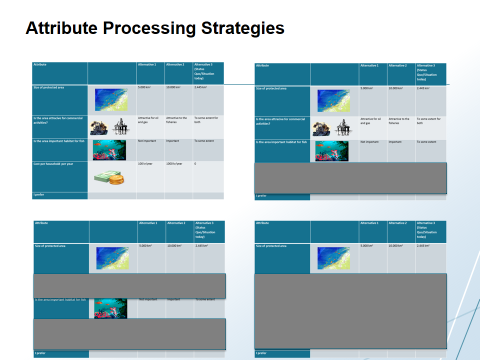 |
|
Both represents a violation of the continuity axiom of consumer theory and may lead to different willingness-to-pay estimates. We find relatively few respondents using simplifying strategies and argue this may be because the DCE was administered in a valuation workshop setting and the relatively simple study design. Furthermore, taking discontinuous preferences into account in the modeling does not lead to significantly different willingness-to-pay estimates indicating that the impact may be small. This is good news for policy makers and discrete choice experiment practitioners alike, as it underlines the reliability of the estimates.
|
|
| Reports | |
|
Falk-Andersson, 2016. Kunnskap om og forvaltning av kaldtvannskorall I denne rapporten har vi kartlagt kunnskap om kaldtvannskoraller, potensielle trusler, samt forvaltning av kaldtvannskoraller i Norge. Gjennom intervjuer med forskjellige aktører innen fiskerinæringen og forvaltningen har vi fått en oversikt over deres holdninger og kunnsap. Ettersom fiskerne både har god kunnskap og i størst grad blir berørt av eventuelle restriksjoner for fiske på go/ eller rundt koraller, var fiskernes kunnskap hovedfokuset i dette prosjektet. I tillegg fant vi det relevant å snakke med forvaltere om deres kunnskap om koraller og hvordan forvaltningen av disse foregår i praksis. Vi ønsket spesielt å se på hvordan dagens reguleringer fungerer i forhold til å unngå skade på kaldtvannskoraller, samt hvordan aktørene i fiskerinæringen mener disse reguleringene eventuelt kan forbedres. |
Media
Claire Armstrong interviewed on the Australian National Community Radio “On the Money” program February 3 2016.
As the only economist in a sea of biologists, Claire Armstrong was invited to the Zoological Society of London to talk about the Conservation value of European deep sea habitats. She spoke about the knowledge gained from the CoralValue project.
Rachel Nuwer at the Hakai Magazine interviewed Margrethe Aanesen about Valuing the Unkown. Why are people willing to pay to protect something they've only just learned exists?
Fiskeribladet fiskaren 07.15.14 rapporterer om de første resultatene fra studien. De viser at nordmenn er villige til å begrense både oljenæringen og fiskeriaktiviteten for å sikre korallrevene langs kysten. Folk bryr seg om at livet i havet har gode levekår.
The student newspaper Utropia interviewed Tom van Rensburg when he visited Tromsø and the Marine Resource Economics Group. He told them why valuation of cold water corals is important.
